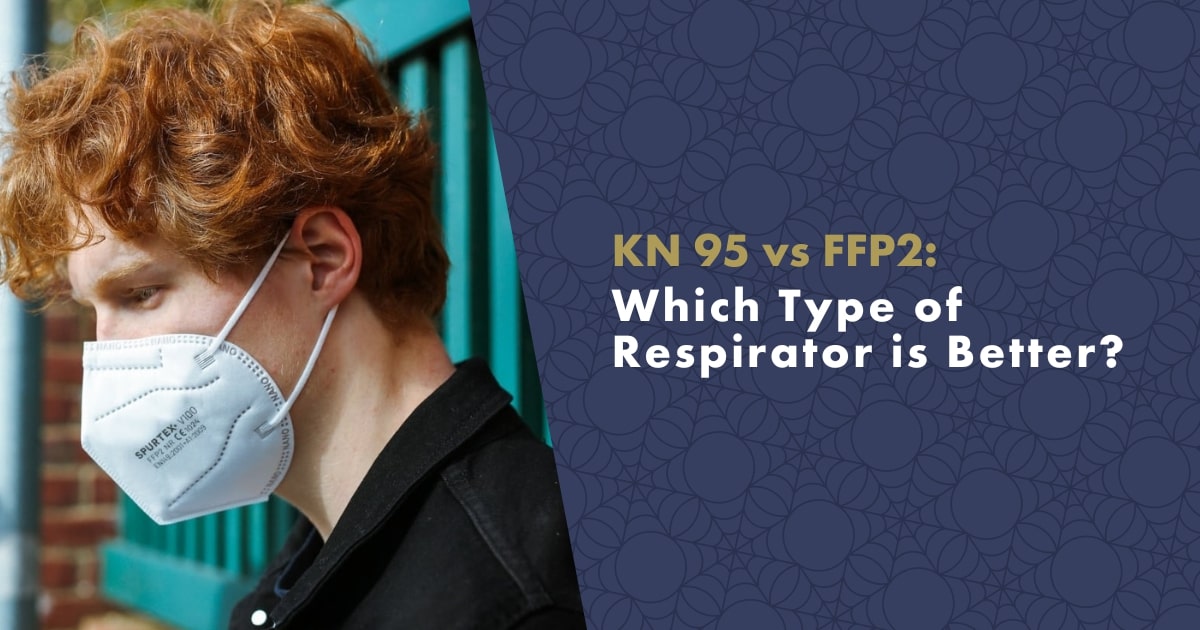
Differences in Tested Filtration
Robust and sophisticated face masks complying with the European protection class FFP2 must successfully pass not only tests to capture miniature crystals of NaCl (table salt), which represent solid particles such as dust, pollen, etc., but also a test for the capture of very small paraffin drops, which in the test represent liquids such as droplets, liquid aerosol with microorganisms and other liquid substances.
The Chinese standard leading to the KN95 designation does not deal with the paraffin filtration test at all. The simple designs of KN95 face masks are insufficient protection for users against viral infection because they fail to capture liquid substances including droplets and aerosols with viruses. Chinese face masks labeled KN95 are completely unsuitable for preventing COVID-19 and their import and sale in the EU is illegal.
European Study Finds Chinese KN95 Masks Don't Fit Most European Faces, Posing Health Risks
Chinese face masks marked KN95 do not fit on most European faces. The tightness of the face masks is tested on the faces of volunteers in a special chamber. The Chinese test the tightness of face masks on Asians, the Europeans test the tightness of face masks on European volunteers. Asians have a significantly different face shape than the vast majority of Europeans.
Even a crack with a diameter of a tenth of a millimeter is for a virus like a hole the size of an entire city block. If you were to suck in unfiltered air through the gap between the face mask and the face, you would create an air current through which aerosol particles with viruses can also travel to your mouth and nose. By choosing a face mask that complies with the European protection class FFP2, you are choosing a suitable protective device in terms of real tightness on your face.
European FFP2 Masks Outperform Chinese KN95 Masks in Dual Solid and Liquid Particle Filtration Tests
European manufacturers of face masks, whose certified products meet the strict criteria of European standards, are under constant control of supervisory state authorities. At least once a year, an accredited testing center checks the quality of face masks for which it has issued the relevant EU certificate. Additional spot checks can be carried out by the supervisory authority.
The importers of Chinese face masks, on the other hand, usually do not carry out quality control. And unfortunately, the quality often does not match what the Chinese manufacturers promise on the face mask packaging and in the supplied certificates.
Avoiding Counterfeits: A Guide to Choosing Reliable Face Masks
Avoid KN95 labeled face masks that are sold illegally in the european market. If you opt for European protection class FFP2 face masks certified according to EU standards, the following information must be indelibly printed on the upper side of the face mask:
- name of the face mask,
- the valid standard according to which the face mask was certified (EN 149:2001+A1:2009),
- protection class (FFP2),
- mark R (reusable) or NR (single use),
- the CE mark together with four digits indicating the accredited testing body that issued the relevant certificate EU
Some fraudsters from China put the abbreviation CE on their products without a European certificate to give European consumers the false impression that they are selling products in compliance with European standards. When detecting fraud, they usually state that it is an abbreviation of the initial letters of the phrase "China Export".
Fraudsters are very inventive in their fraudulent practices. Sometimes they falsify the certificate or obtain a certificate for a few examples of high-quality face masks and together with this certificate deliver non-functioning cheap shunts to Europe. If you don't want to be fooled, get European protection class FFP2 face masks from proven manufatures, like Spurtex or Breasafe.
Comparing FFP2 and FFP2 Nanofiber Face Masks
There is also a big difference between FFP2 face masks and FFP2 nanofiber face masks.
Nano face masks
|
Industrial face masks
|
Resources
Regli, A., Sommerfield, A. and von Ungern‐Sternberg, B.S., 2021. The role of fit testing N95/FFP2/FFP3 masks: a narrative review. Anaesthesia, 76(1), pp.91-100.
Mottay, L., Le Roux, J., Perumal, R., Esmail, A., Timm, L., Sivarasu, S. and Dhea, K., 2021. KN95 filtering facepiece respirators distributed in South Africa fail safety testing protocols. South African Medical Journal, 111(3), pp.234-239.
Karuppasamy, K. and Obuchowski, N., 2021. Comparison of fit for sealed and loose-fitting surgical masks and N95 filtering facepiece respirators. Annals of work exposures and health, 65(4), pp.463-474.
Su, W.C., Lee, J., Xi, J. and Zhang, K., 2022. Investigation of mask efficiency for loose-fitting masks against ultrafine particles and effect on airway deposition efficiency. Aerosol and air quality research, 22(1).
